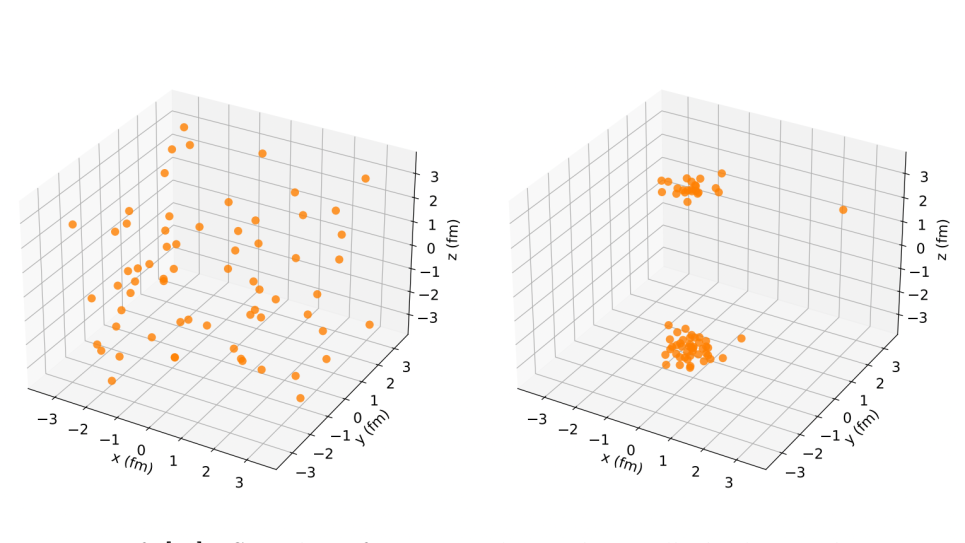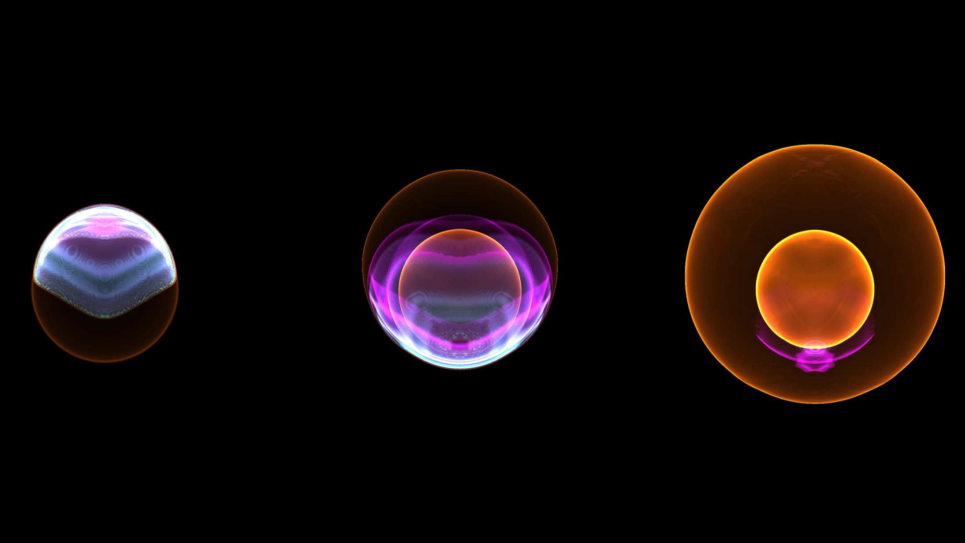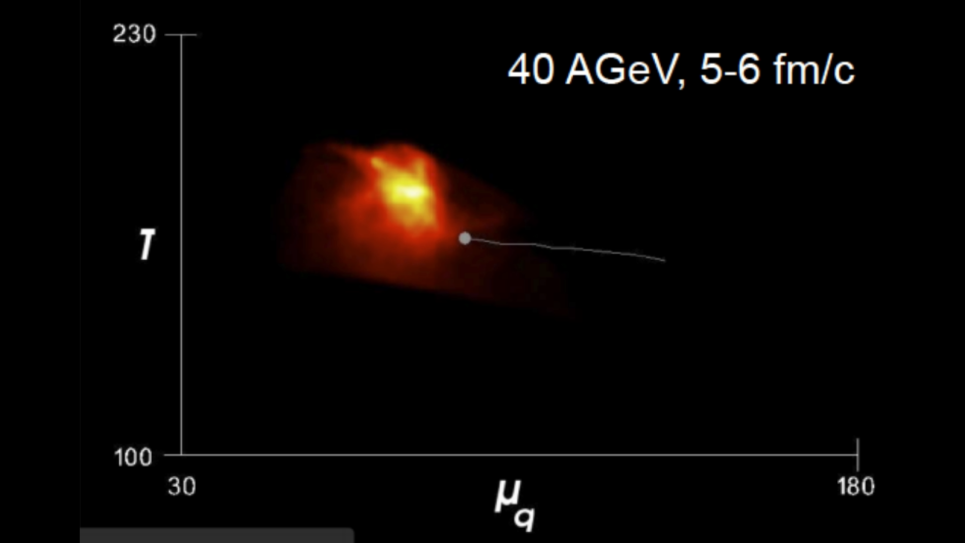
Snapshot of a Metropolis random walk displaying the position of 66 neutrons in the simulation box during the an AFDMC calculation of PNM at saturation density. The left panel refers to NV2-Ia NN force alone and the nucleons are distributed uniformly. In the right panel, the the three-body force NV2+3-Ia is included and leads to to the formation of closely packed droplets.

